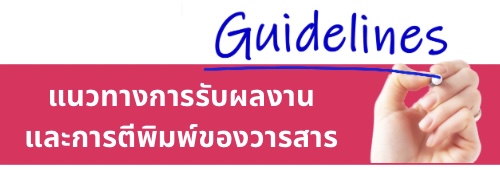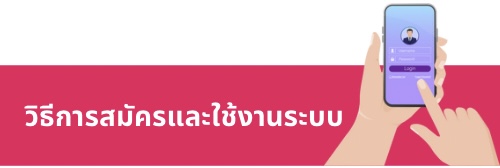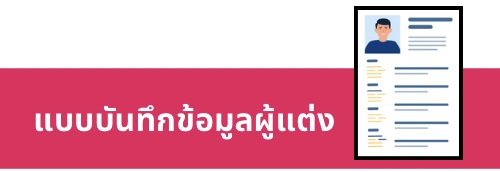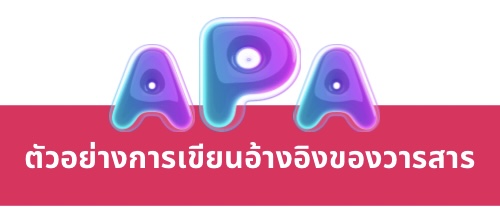ผลของโปรแกรมการพยาบาลระบบสนับสนุนและให้ความรู้สำหรับผู้ดูแลผ่านแอปพลิเคชันไลน์ต่อความสามารถของผู้ดูแลและความสามารถ ในการประกอบกิจวัตรประจำวันของผู้ป่วยโรคหลอดเลือดสมองที่บ้าน
คำสำคัญ:
ความสามารถของผู้ดูแล, ความสามารถในการปฏิบัติกิจวัตรประจำวันของผู้ป่วยโรคหลอดเลือดสมอง, โปรแกรมการพยาบาลระบบสนับสนุนและให้ความรู้, แอปพลิเคชันไลน์บทคัดย่อ
การวิจัยนี้เป็นการวิจัยเชิงทดลองแบบสุ่มและมีกลุ่มควบคุม มีวัตถุประสงค์เพื่อเปรียบเทียบความสามารถของผู้ดูแล และความสามารถในการปฏิบัติกิจวัตรประจำวันของผู้ป่วยโรคหลอดเลือดสมอง ระหว่างกลุ่มทดลองและกลุ่มควบคุม ตัวอย่าง คือ ผู้ดูแลหลักและผู้ป่วยโรคหลอดเลือดสมองชนิดตีบที่ได้รับการวินิจฉัยครั้งแรกโรงพยาบาลสมุทรปราการ สุ่มตัวอย่างอย่างง่ายตามเกณฑ์การคัดเข้า ซึ่งผู้วิจัยมีการจับคู่ผู้ป่วยโรคหลอดเลือดสมองเป็นรายบุคคล และทำการสุ่มตัวอย่างเข้ากลุ่มทดลอง จำนวน 32 คน และกลุ่มควบคุม จำนวน 32 คน กลุ่มทดลองได้รับโปรแกรมการพยาบาลระบบสนับสนุนและให้ความรู้กับผู้ดูแลผู้ป่วยผ่านแอปพลิเคชันไลน์ และกลุ่มควบคุมได้รับการพยาบาลตามมาตรฐาน เครื่องมือที่ใช้ในการวิจัย คือ แบบประเมินความสามารถของผู้ดูแลในการดูแลผู้ป่วยโรคหลอดเลือดสมอง และแบบประเมินความสามารถในการปฏิบัติกิจวัตรประจำวันของผู้ป่วยโรคหลอดเลือดสมอง มีค่าดัชนีความตรงตามเนื้อหาจากผู้เชี่ยวชาญ 3 ท่าน เท่ากับ .83 และ 1.00 ตามลำดับ และค่าสัมประสิทธิ์แอลฟาของครอนบาคเท่ากับ .81 และ .93 ตามลำดับ วิเคราะห์ข้อมูลด้วยสถิติบรรยายและการทดสอบความแตกต่างของค่าเฉลี่ยด้วยการทดสอบที
ผลการวิจัยพบว่า กลุ่มทดลองภายหลังได้รับโปรแกรมมีค่าเฉลี่ยความสามารถของผู้ดูแล และค่าเฉลี่ยความสามารถในการปฏิบัติกิจวัตรประจำวันของผู้ป่วยโรคหลอดเลือดสมองสูงกว่าก่อนได้รับโปรแกรมอย่างมีนัยสำคัญทางสถิติที่ระดับ .05 และพบว่าค่าเฉลี่ยความสามารถของผู้ดูแลในกลุ่มทดลอง (M = 132.09, SD = 11.04) สูงกว่ากลุ่มควบคุม (M = 98.75, SD = 21.78) อย่างมีนัยสำคัญทางสถิติที่ระดับ .05 (t = 9.116, p = .000) และค่าเฉลี่ยความสามารถในการปฏิบัติกิจวัตรประจำวันของผู้ป่วยโรคหลอดเลือดสมองในกลุ่มทดลอง (M = 89.53, SD = 14.05) สูงกว่ากลุ่มควบคุม (M = 74.69, SD = 19.43) อย่างมีนัยสำคัญทางสถิติที่ระดับ .05 (t = 3.503, p = .001)
Downloads
เอกสารอ้างอิง
Bureau of Policy and Strategy, Ministry of Public Health. (2020). Public health statistics B.E. 2562. Bangkok: The War Veterans Affairs Office Printing.
Jitjung, V. (2018). A proposed program for promoting competency of caregivers for stroke patents, Vichienburi hospital, Pechaboon province (Doctor of philosophy, public health major in health promotion). Faculty of Liberal Arts, Krirk University, Bangkok, Bang Khen.
Kellar, S. P., & Kelvin, E. (2012). Munro's statistical methods for health care research (6th ed.). Philadelphia, PA: Wolters Kluwer Health/Lippincott Williams & Wilkins.
Kiernan, T. E., & Demaerschalk, B. M. (2010). Nursing roles within a stroke telemedicine network. Journal of Central Nervous System Disease, 2, 1–7.
Kitsiou, S., Paré, G., Jaana, M., & Gerber, B. (2017). Effectiveness of mHealth interventions for patients with diabetes: An overview of systematic reviews. PloS One, 12(3), e0173160.
Mahoney, F. I., & Barthel, D. W. (1965). Functional evaluation: The Barthel index. Maryland State Medical Journal, 14, 61–65.
Mao, Y., Lin, W., Wen, J., & Chen, G. (2020). Impact and efficacy of mobile health intervention in the management of diabetes and hypertension: A systematic review and meta-analysis. BMJ open diabetes research & care, 8(1), e001225.
Moonthee, W., Monkong, S., Sirapo-ngam, Y., & Leelacharas, S. (2016). Impact of transitional care programme and family caregivers on stroke patients’ routine activity performance, complications, and satisfaction. Thai Journal of Nursing Council, 31(1), 95-110.
Neuroscience Institute. (2011). Clinical nursing practice guideline for stroke. Bangkok: Department of Medical services, Ministry of Public Health.
Orem, D. E., Taylor, S. G., & Renpenning, K. M. (2001). Nursing: Concepts of practice (6th ed.). St. Louis: Mosby.
Qureshi, A. I., Baskett, W. I., Huang, W., Shyu, D., Myers, D., Raju, M., . . . Shyu, C. R. (2021). Acute ischemic stroke and COVID-19: An analysis of 27,676 patients. Stroke, 52(3), 905–912. https://doi.org/10.1161/STROKEAHA.120.031786
Rutledge, C. M., Kott, K., Schweickert, P. A., Poston, R., Fowler, C., & Haney, T. S. (2017). Telehealth and eHealth in nurse practitioner training: Current perspectives. Advances in Medical Education and Practice, 8, 399-409.
Saitree, R., Chaimay, B., & Woradet, S. (2019). Activities of daily living among stroke patients. Academic Journal of Community Public Health, 5(2), 1-13.
Silapavitayatorn, B., & Chitpakdee, B. (2020). The use of health information technology in nursing for patient safety. Journal of Nursing and Health Care, 38(2), 6-14.
Sirintaranont, P. (2015). The effect of caregivers coaching program on activities of daily living in adult stroke patients (Master of nursing science program, adult nursing). Faculty of Nursing, Chulalongkorn University, Bangkok, Pathumwan.
Sukket, T. (2016). The effects of an ability development program for caregivers of cerebrovascular patients at Tap khlo district, Phichit province (Master of nursing science program, community health nurse practitioner). Faculty of Nursing, Sukhothai Thammathirat Open University, Nonthaburi, Pak Kret.
Suwanwela, N. C. (2014). Stroke epidemiology in Thailand. Journal of stroke, 16(1), 1–7. https://doi.org/10.5853/jos.2014.16.1.1
Veldema, J., & Jansen, P. (2020). Resistance training in stroke rehabilitation: Systematic review and meta-analysis. Clinical rehabilitation, 34(9), 1173–1197.
Virani, S. S., Alonso, A., Benjamin, E. J., Bittencourt, M. S., Callaway, C. W., Carson, A. P., . . . American Heart Association Council on Epidemiology and Prevention Statistics Committee and Stroke Statistics Subcommittee. (2020). Heart disease and stroke statistics—2020 update: A report from the American Heart Association. Circulation, 141(9), e139-e596.
World Health Organization. (2019). World health statistics overview 2019: Monitoring health for the SDGs. Geneva: World Health Organization.

ดาวน์โหลด
เผยแพร่แล้ว
รูปแบบการอ้างอิง
ฉบับ
ประเภทบทความ
สัญญาอนุญาต
ลิขสิทธิ์ (c) 2023 วารสารพยาบาลตำรวจ

อนุญาตภายใต้เงื่อนไข Creative Commons Attribution-NonCommercial-NoDerivatives 4.0 International License.
ผลงานที่ได้ตีพิมพ์แล้วจะเป็นลิขสิทธิ์ของวารสารพยาบาลตำรวจ














